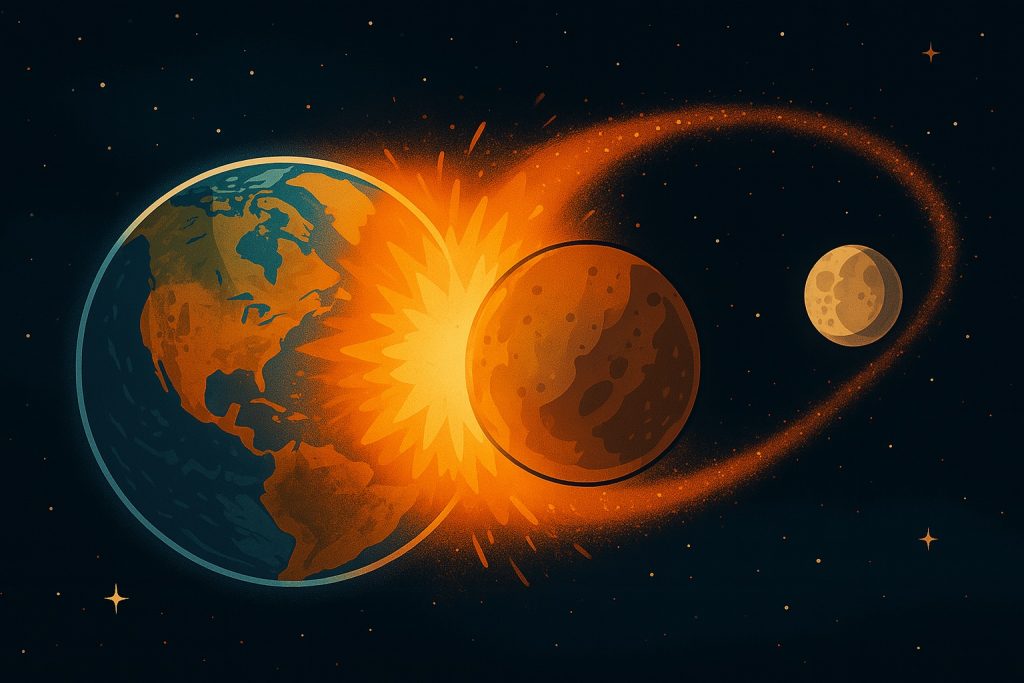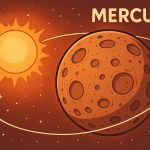Theia is a hypothetical ancient planetary body believed to have collided with Earth over 4 billion years ago. While Theia no longer exists as a separate planet, scientists suggest that this cosmic impact played a critical role in the formation of the Moon and may have even shaped the early structure of our planet. The idea of Theia is central to the giant impact hypothesis, the most widely accepted theory explaining the Moon’s origin.
Who or What Was Theia?
Theia is thought to have been a Mars-sized protoplanet that once orbited the Sun in the early Solar System. According to models, it shared a similar orbital path with Earth and eventually collided with it at a shallow angle, around 4.5 billion years ago.
This collision was so immense that a portion of Earth’s mantle and much of Theia’s material were ejected into orbit. These fragments eventually coalesced to form the Moon. The remaining material from Theia likely merged with Earth’s core and mantle, forever becoming a part of our planet.
The Giant Impact Hypothesis
This theory proposes that the Moon was not captured or formed independently, but rather originated from a colossal impact. Key supporting evidence includes:
- Moon’s composition: Nearly identical to Earth’s outer layers, especially in isotopic makeup.
- Small iron core: The Moon has much less iron than Earth, suggesting it was formed mostly from surface materials.
- Angular momentum: The current Earth-Moon system spins in a way that matches predictions from an ancient impact.
The giant impact hypothesis has become the leading explanation because it best fits both computer simulations and lunar sample data collected from the Apollo missions.
Could Theia Still Exist?
Some scientists suggest that remnants of Theia may still be deep within Earth. Seismic data has revealed two giant structures in the lower mantle, called Large Low Shear Velocity Provinces (LLSVPs), beneath Africa and the Pacific. These regions might be leftover chunks of Theia, buried inside the planet.
Additionally, no evidence of an intact Theia-like body exists elsewhere in the Solar System, supporting the idea that it was destroyed or absorbed during the collision.
Significance of the Impact
The Theia-Earth collision did more than just create the Moon:
- Stabilized Earth’s tilt: The Moon helps regulate Earth’s axial tilt, which stabilizes the climate and seasons.
- Boosted planetary evolution: The violent mixing may have contributed to Earth’s layered structure and internal heat.
- Introduced water and elements: The impact might have brought or redistributed volatile elements, contributing to Earth’s eventual habitability.
A Cosmic Turning Point
The Moon influences tides, biological rhythms, and the length of days. It’s possible that without Theia’s dramatic role in Earth’s early history, the planet would have evolved very differently—or not at all.
Please remember that this is a hypothesis and there is no direct evidence to support it.
Glossary
- Protoplanet: A large body in the early stages of planetary formation.
- Isotopes: Variants of chemical elements with differing numbers of neutrons.
- LLSVPs: Massive structures deep in Earth’s mantle that may differ in composition from the surrounding rock.
- Angular momentum: The momentum of a rotating object, important in planetary dynamics.


